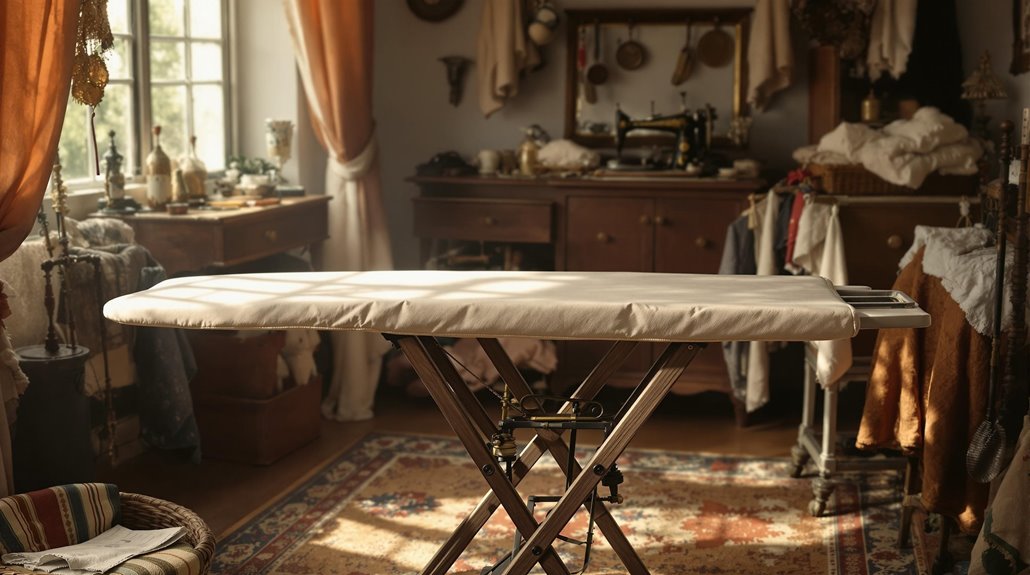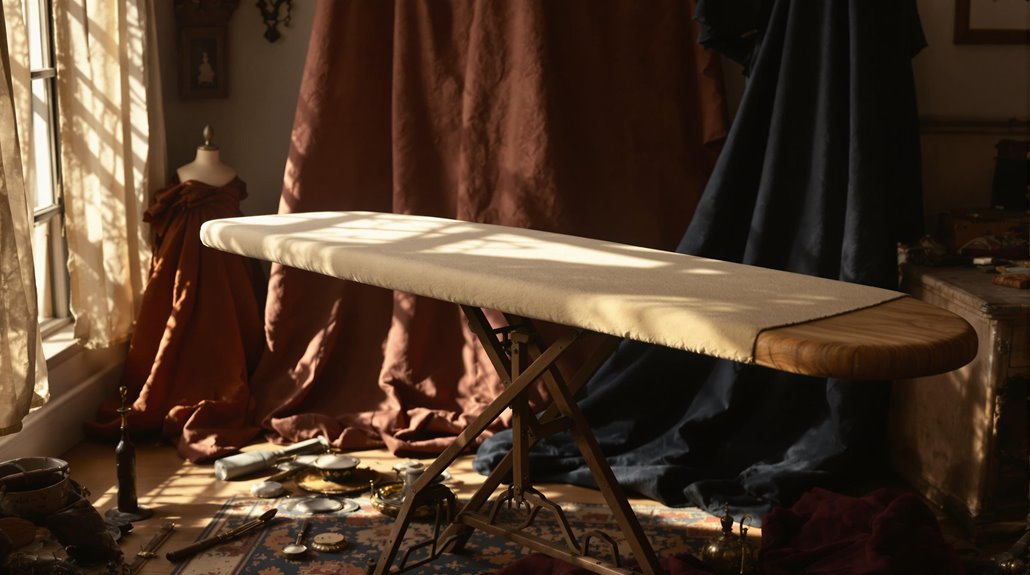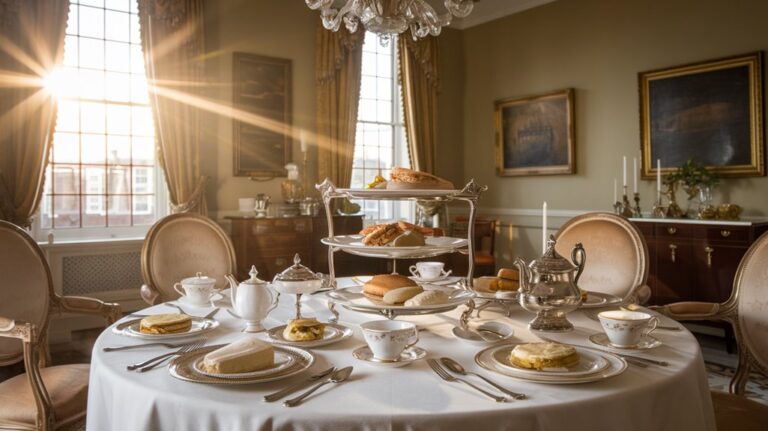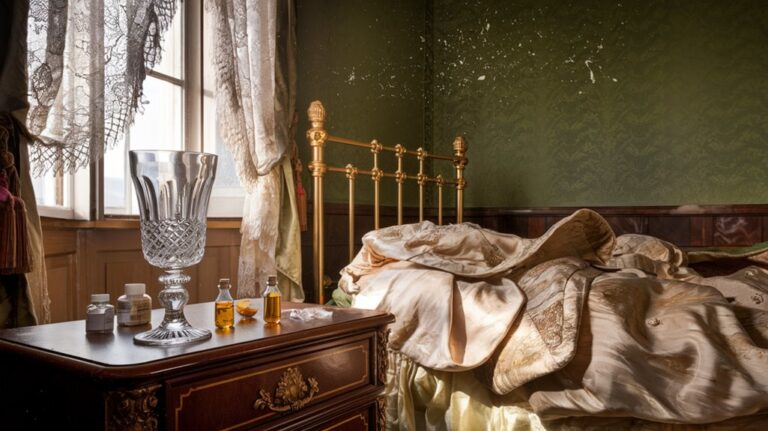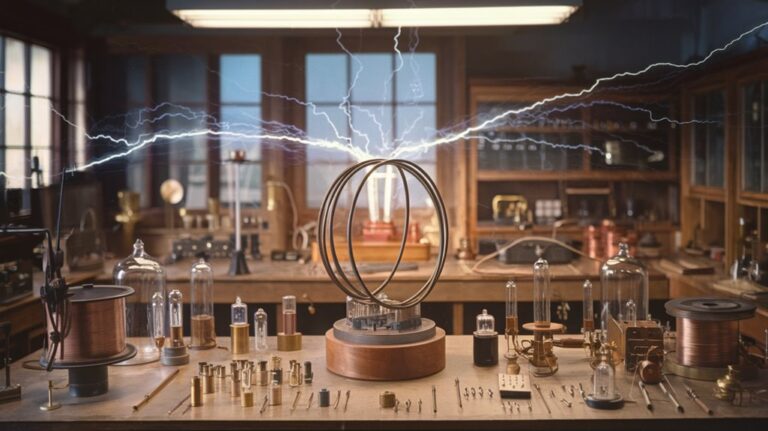Sarah Boone’s Ironing Board Curves: The Sewing Flop That Revolutionized Laundry Day
You've probably never given much thought to your ironing board's shape, but that curved design you take for granted was once a revolutionary breakthrough. In 1892, Sarah Boone transformed a common household headache into an elegant solution with one simple innovation. As a former slave turned dressmaker, she understood the frustrations of pressing fitted garments on flat surfaces. Her story isn't just about making wrinkles disappear—it's about pressing through barriers that seemed impossible to break.
The Dressmaker Who Changed Domestic Life Forever
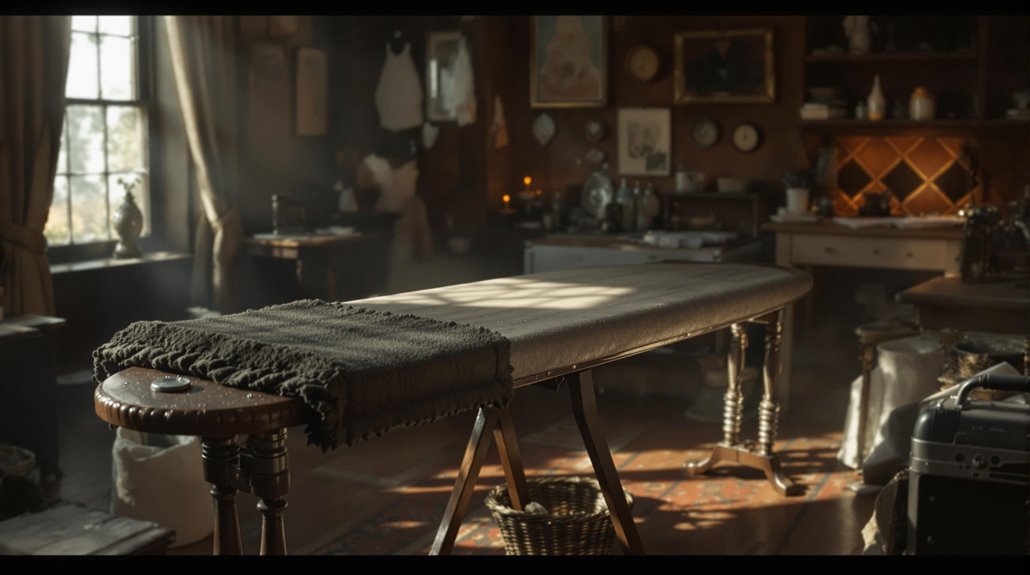
While many people take ironing boards for granted today, Sarah Boone's journey from an enslaved person to a pioneering inventor transformed how we press clothes.
Born into slavery in 1832, she married young and eventually made her way to freedom in New Haven, Connecticut. There, she established herself as a skilled dressmaker, serving both Black and white clientele. Unlike her tragic namesake who was sentenced to life in prison, this Sarah Boone left a positive legacy that still impacts households today.
You can trace Boone's innovative spirit to her work in dressmaking techniques. As she competed with other seamstresses in New Haven, she realized the need for better tools to press fitted garments. Her invention included collapsible legs that made storage much simpler than previous ironing methods.
Her experience led to an invention that would have lasting societal impact – a narrowed ironing board specifically designed for women's clothing. This practical innovation didn't just improve her dressmaking business; it revolutionized how millions would iron their clothes for generations to come.
From Flat Planks to Curved Innovation
Long before Sarah Boone's breakthrough, people relied on primitive ironing methods that dated back to ancient China, where hot coals in metal pans pressed garments as early as the 1st century BC.
These basic techniques gradually evolved into the use of sad irons for pressing clothes.
Traditional ironing techniques evolved to include sad irons heated on fires, but these flat surfaces struggled with the complexities of 19th-century fashion.
When you're trying to press intricate Victorian garments, you'll appreciate why flat planks weren't cutting it.
Working as a New Haven dressmaker, Boone intimately understood the challenges of pressing clothing.
Here's what made garment care so challenging:
- Tiny waistlines and curved seams were impossible to reach
- Sleeves couldn't be pressed effectively from both sides
- Unwanted creases often appeared in delicate fabrics
Boone's curved, narrow design revolutionized the process by allowing you to iron both inside and outside of sleeves and bodices, while its padded surface protected fabrics from unwanted impressions.
Breaking Barriers: A Black Woman's Journey to Patent Success
Despite facing the dual challenges of slavery and illiteracy, Sarah Boone emerged as a pioneering Black inventor who shattered racial and gender barriers of the 19th century.
You'll find her journey particularly remarkable when you consider the patent challenges she overcame in an era when Black Americans couldn't even claim their own inventions before the Civil War.
Born enslaved in North Carolina, where educational barriers made it illegal for Black people to learn reading and writing, Boone didn't let these obstacles define her future.
After gaining freedom through marriage in 1847, she moved to New Haven, Connecticut, learned to read in her late 40s, and ultimately secured U.S. Patent No. 473,653 in 1892.
Her achievement made her the fourth known Black woman patent holder in America and Connecticut's first.
Supporting her family as a skilled dressmaker, she understood the daily challenges of pressing clothes.
Her revolutionary design featured a narrowed, padded top that made it easier to iron both the inside and outside of women's garments.
The Genius Behind Those Sleeve-Friendly Curves
Before Sarah Boone's innovative design, ironing sleeves and fitted garments was a frustrating task that required makeshift solutions like propping boards between chairs.
Born in North Carolina in 1832, Boone's early life experiences as the daughter of enslaved parents shaped her drive to solve everyday challenges.
Her sleeve design breakthrough featured a narrow, curved shape that revolutionized how you could press complex garments, especially those tight-fitting corset-era clothes. As a successful New Haven dressmaker, Boone understood firsthand the challenges of pressing fitted clothing for her customers.
The genius of her design lay in these key features that boosted ironing efficiency:
- A reversible board that let you press both inside and outside seams
- A curved shape specifically engineered for women's fitted clothing
- A padded surface that prevented unwanted impressions on delicate fabrics
You'll find Boone's influence in every modern ironing board today, as her patented design proved to be "cheap, simple, convenient and highly effective" – qualities that transformed the tedious task of pressing clothes into a more manageable chore.
A Legacy Pressed Into History: How Boone Shaped Modern Homes
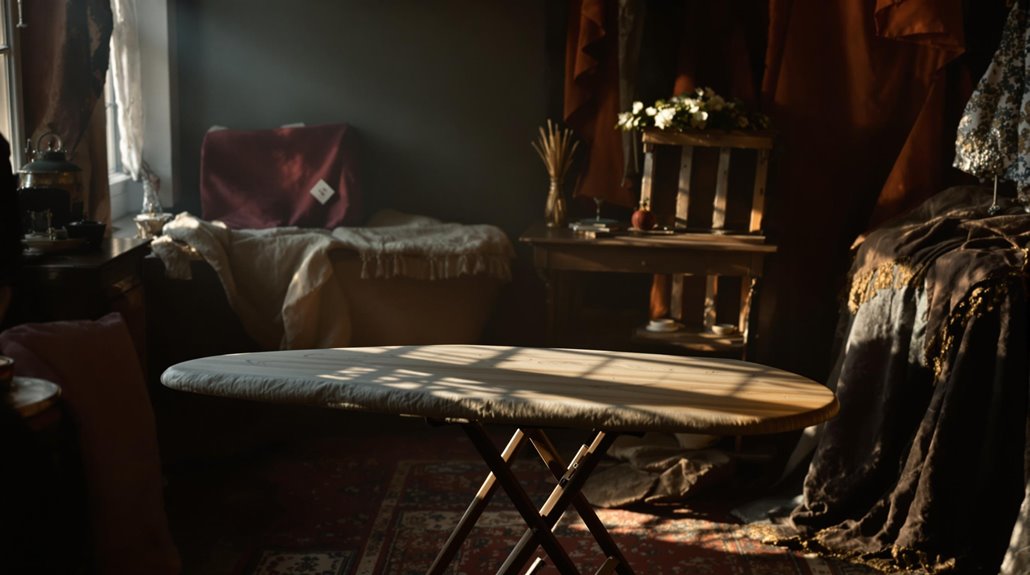
Sarah Boone's ingenious ironing board design did more than just solve a common household problem – it carved her place in American innovation history. As the fourth Black woman to receive a U.S. patent, she exemplified how domestic innovation could transcend social barriers in the post-Civil War era.
Her experience as a skilled dressmaker in New Haven helped her identify the pressing need for better garment care tools. You'll find Boone's historical significance extends far beyond the laundry room. Her 1892 patent didn't just improve a household chore; it demonstrated how formerly enslaved individuals could shape American progress through invention.
When you use a modern ironing board today, you're experiencing the evolution of Boone's original design – with its clever curved shape and collapsible features still influencing contemporary models. Her achievement continues to inspire innovators, proving that groundbreaking ideas can emerge from everyday challenges, regardless of the inventor's background.

